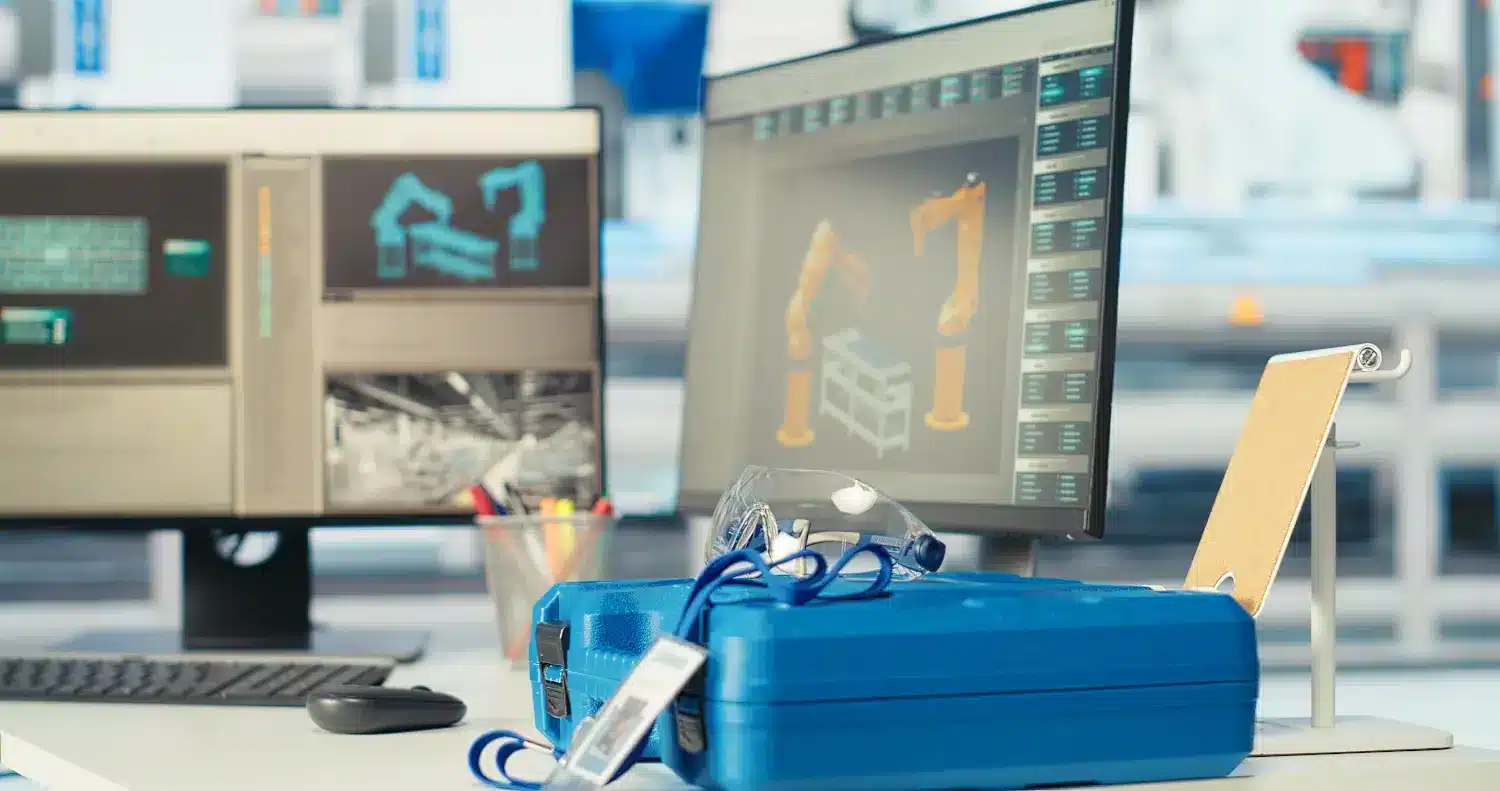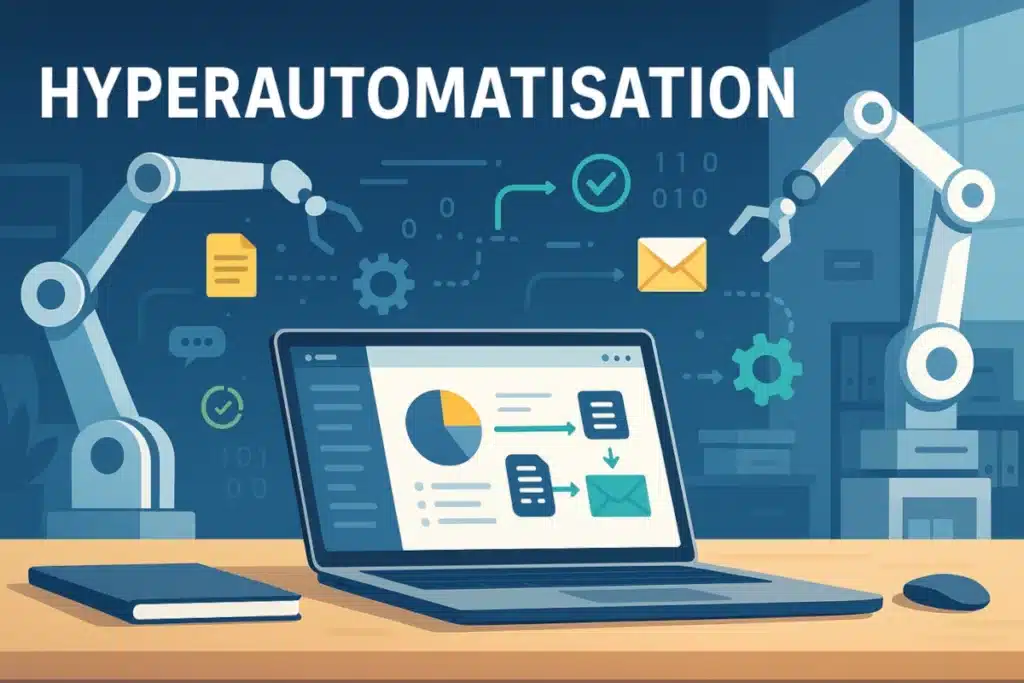Hyperautomation… At first glance, it may seem like a daunting term. However, this technical concept represents a significant transformation. It aims to automate any task that can be automated using AI, robotics, and other technologies. The ultimate goal? To liberate teams from repetitive tasks, enhance overall efficiency, and minimize errors.
How does it actually work? Let this guide lead the way.
What is hyperautomation?
The concept is uncomplicated: likely, you have already automated certain tasks within your job. For instance, you may use an application that identifies potential prospects for follow-up a week later, generating a corresponding list. Hyperautomation shares this philosophy but goes much further: it focuses on automating entire processes. By utilizing AI, it can better analyze situations, facilitating decision-making followed by necessary actions.
An example that demonstrates this vividly: A company receives hundreds of invoices through email, PDFs, and online forms. Traditionally, this requires human supervision for manual entry to arrange the data into a uniform model and produce a singular file for data processing.
Let a hyperautomation system handle this task. This system will:
- Extract key information (supplier, date, amount).
- Validate compliance with a model and make corrections if needed.
- Direct all correctly formatted invoices to the accounting department.
- Initiate payment for all compliant invoices while only bringing specific ones to the team’s attention.
This approach yields a clear time saving, a reduction in errors, and thus a boost in efficiency.
Why is hyperautomation a valuable?
Automation is no longer optional; it’s a critical necessity to remain competitive. With hyperautomation, however, organizations reach new heights as it requires a comprehensive analysis of company operations. It entails redefining processes for greater efficiency, especially by pinpointing bottlenecks. Moreover, it’s crucial to distinguish which data is structured and which isn’t.
At this juncture, identifying the most suitable technologies for your needs is key, like RPA (Robotic Process Automation) or OCR (Optical Character Recognition for scanned documents), etc. Undoubtedly, a phased approach is necessary, moving from simple to complex incrementally. The eventual gains will be noteworthy, and examples are forthcoming.
The challenges of hyperautomation
Hyperautomation comes with its share of challenges, addressing several vital aspects.
A robust IT infrastructure
The tools for data management and the existing IT systems must support hyperautomation. Be prepared: it sometimes requires substantial investments before this transformation can occur.
Navigating the solutions landscape
The market is rife with solutions. Choosing tools that integrate well and address your specific needs calls for a comprehensive initial evaluation.
Valuing human contribution
Some employees might feel apprehensive about this shift, worried their jobs are at risk or that they lack proficiency with the new tools. It’s crucial to invest in training to equip them with necessary skills and demonstrate that these tools serve to assist them, not replace them. Automation empowers them to focus on higher-value tasks where their creativity and expertise are essential.

Key technologies of hyperautomation
Process Discovery
Effective automation begins with understanding. Process Discovery, powered by AI, maps every interaction among people, systems, and data. This provides a comprehensive 360° analysis of operations: identifying bottlenecks, measuring delays, and targeting where automation will have the greatest impact.
Intelligent Document Processing
Intelligent Document Processing (IDP) allows scanning of invoices, contracts, forms, and other documents, extracting text and enhancing it. This means hundreds of claims can be validated each day without human involvement.
Low-code
No need to be a developer to design automations. Thanks to low-code platforms, any team member can create, test, and deploy workflows.
RPA and intelligent automation
Robotic Process Automation (RPA) replicates human clicks and inputs to handle repetitive tasks. An application might categorize incoming emails, extract attachments, and then initiate a suitable workflow.
AI
An AI-driven chatbot can typically resolve 70% of the most frequent queries, directing only complex scenarios to a human.
iPaaS
Integration platforms (iPaaS) aid in managing application workflow orchestration. An order can automatically generate a corresponding invoice, update inventory, and initiate warehouse preparation.
Concrete case studies
Airbus
This aerospace company reduced the processing time for expense reports from 3 weeks to just a few days, also halving the workload involved. An OCR (Optical Character Recognition) app scans and interprets receipts, and an AI algorithm reconciles them with approved expenses and identifies anomalies.
Equinix
Managing data centers, this company saved 14,000 hours annually on invoice management using OCR and AI. Supplier invoices are automatically processed, with only uncertain cases brought to employee attention.
Inter Aduaneira
A maritime logistics firm, Inter Aduaneira implemented RPA to monitor stock levels, automatically trigger orders, and optimize shipping schedules. This led to a 30% reduction in delays and a 15% decrease in operational costs.
Hyperautomation is now!
What more is there to say? The examples provided make the case clear. Hyperautomation is already a reality in numerous sectors, offering time savings, cost reductions, and quality improvements. Who will be next?











